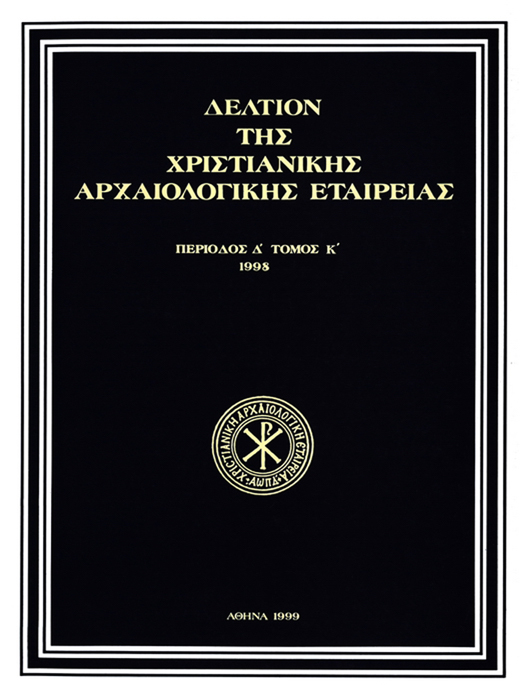Un épitaphios brodé du 1672 au Mmusée Byzantin

Abstract
An Embroidered Epitaphios οf 1672 in the Byzantine Musem of Athens
The embroidered epitaphios from the collection of the Byzantine Museum (BM 7047) depicts two scenes; at the background the Descent from the Cross and at the foreground the Lamentation. Underneath the larnax in the Lamentation scene where the body of Christ rests, there is an inscription including part of a chant, which is sang on a Good Friday, the year 1672 and the name of a certain Manolis, who could either be the artisan or the donor of the epitaphios. The iconographic analysis of each scene reveals that their prototypes come from Cretan painting. The Lamentation scene repeats its 16th and 17th century popular format, while that for the Descent is based on a recreation of the 17th century after an engraving of Marcantonio Raimondi. As regards its composition the epitaphios is a unique case study, as the quality of the embroidery, certain technical details and the theological meaning that connects the two scenes bespeak a renowned workshop, probably from Constantinople.
Article Details
- How to Cite
-
ΠΑΠΑΣΤΑΥΡΟΥ Ε. (1999). Un épitaphios brodé du 1672 au Mmusée Byzantin. Deltion of the Christian Archaeological Society, 20, 399–408. https://doi.org/10.12681/dchae.1226
- Section
- Articles
The copyright for articles in the journal Deltion of the Christian Archaeological Society (henceforth Deltion) is retained by the author(s), with first publication rights granted to the journal and to EIE/ EKT the right to store and communicate these articles to the public via its information infrastructures. By virtue of their appearance in this journal, articles are free to use with proper attribution for non-commercial uses under a ShareAlike obligation. The Christian Archaeological Society and EIE/EKT retain the worldwide right to reproduce, display, distribute, and use articles published in the Deltion in all formats and media, either separately or as part of collective works for the full term of copyright. This includes but is not limited to the right to publish articles in an issue of the Journal, copy and distribute individual reprints of the articles, authorize reproduction of articles in their entirety in another publication of the Christian Archaeological Society, and authorize reproduction and distribution of articles or abstracts thereof by means of computerized retrieval systems.


